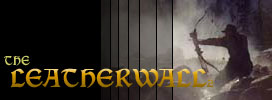So you want to do your own?
Simple, can you cut out a 1/8th piece of aluminum or steel and make it fit your pocket nice and tight?
Can you drill a 3/8's hole where the limb bolts go? If you want to test your ability? You will be able to drill a 5/16's hole for the limb bolt and have it fit for proper location.
You need a set of dial calipers.
You need a mill file and a hacksaw and vise.
You need a drill and some JB weld.
A dremel tool and a burr on the end.
Can you make a facsimile of a dovetail that slides in an ILF dovetail?
All there is to it! Can you find a piece of aluminum and file and fit by sliding it in and testing for fit?
Once you get your jig made, you can relieve the pocket floors by removing 1/8th inch deep and inch back from the bottom of the riser floor and say, 5/8's or so wide and even more will not hurt.
Make the relief cut smooth and level but not absolute because you are gonna do this;
Glue in your plate after you have hacksawed a dovetail slot and angled the bottoms 45 or so degrees in the slot. This is 7/16's wide and a nice half round on the radius. You can magic marker the slot and pop in a limb to see where it is hitting. Witness marks.
The plate was fit, then you marked it down 2.100 to the radius for proper fit and then after getting proper center and marking your lines you hacksawed it out, and cut on the inside of the lines to ensure you could file fit the slot.
You bevel the bottom edges to allow for fitting angle and adjustment.
Confused? OK, just get your plate fit in the pocket. Then mark and drill your limb bolt hole, then mark centerline and put a mark 2.100 down from the center of the LB hole to the proposed end of the dovetail. (radius to be)
Then you would divide the 0.437 by 2 and mark the outer lines to cut to. So, 0.215 from centerline for the slot cuts. Then you file in the lines for a nice straight proper fit and angle the slot after you have made a nice half round radius to the end of the slot with a 3/8's mill file.
Again, check with witness marks sharpie coat by sliding in the ILF limb fittings on your limbs.
Now with all that done, glue in your plate with JB but first you have removes all the paint from the pocket floors for good adhesion.
You have relieved the first inch of the pocket floor to a 1/8th- inch depth, or a little more? more will not hurt because JB will form the bottom of your dovetail because you made a jig to form the dovetail.
After the plate has dried and making sure not to over goob it and have glue run into your relief cuts, you can then goob up your jig and get ready to goob in some JB weld into the dovetail area to form your new ILF dovetail.
So,,,,,,you goob up the dovetail base you have formed and slide int your jig, get it in straight and let it set up 24 hours, checking to make sure it has not shifted (your jig) and let it dry.
Pop it out and use an inverted diamond Dremel attachment to clean up the bottom of the dovetail if needed?
Now that you have a dovetail, you can pop in the limb and see the detent witness marks and make an entry half round with a chainsaw file at the bottom of the riser pocket to allow a raceway entry for the limb detents. Once the end of the raceway is witmnessed, you can do a 28 drill bit and do a small holding detent mark where the detent stops and will hold in your limbs.
Make your limb bolt bishings per the dims in the earlier post and you have a dovetail warf conversion you just did yourself,.



